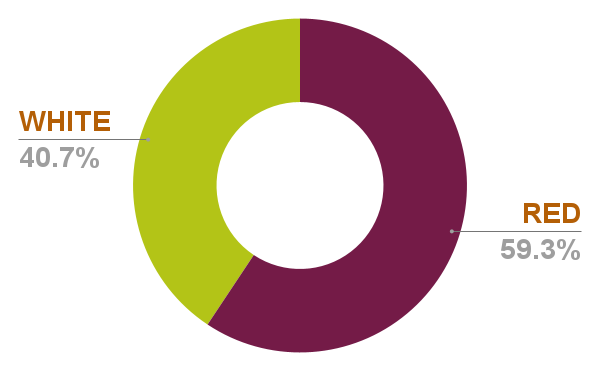By the numbers
-
1AVAs
-
9Wineries
-
5.97%Total Plantings
-
27,323Acreage Under Vine (Acres)
-
1AVAs
-
9Wineries
-
5.97%Total Plantings
-
11,057.47Acreage Under Vine (Hectares)

Overview
Madera County lies within the San Joaquin Valley, one of California’s most prolific agricultural regions. The town of Madera, the county seat, is on Highway 99, midway between the cities of Merced (Merced County) in the north and Fresno (Fresno County) to the south.
The county is rectangular in shape, about 3.5 times wider than long. The rectangle runs northeast to southwest. Its eastern half is hilly to mountainous and largely within the Sierra National Forest. The easternmost quarter includes part of Yosemite National Park. The western half is valley floor. That’s where the vast majority of the county’s non-timber agriculture takes place.
A dry, hot, sunny climate makes Madera County an excellent place for agriculture, assuming water is available for irrigation. The three biggest agricultural products in the county are almonds, cow’s milk, and grapes.
Those grapes include wine grapes, but also raisins and table grapes. Raisins are a significant crop, with two-thirds as much acreage devoted to them as to wine grapes. And both the raisins and table grapes sell for substantially more money per ton than wine grapes. In 2019, raisins were $1,600 per ton, table grapes $1,900, and wine grapes only about $350 per ton.
Given the climate, Madera County is well-suited to fortified wines. The region’s two best-known, smallish wineries, Ficklin and Quady, have each made high-quality wines in this style for several decades.
Nonetheless, almost all wine grapes grown in Madera County go into table wines. Today, its vine acreage comprises 4% of California’s total. And those acres produce about 9% of the state’s wine grapes by ton. The broad, flat growing areas and climate in Madera County make high-yield, mechanized viticulture relatively easy. Thus, the county is a significant source for mass-market producers.
